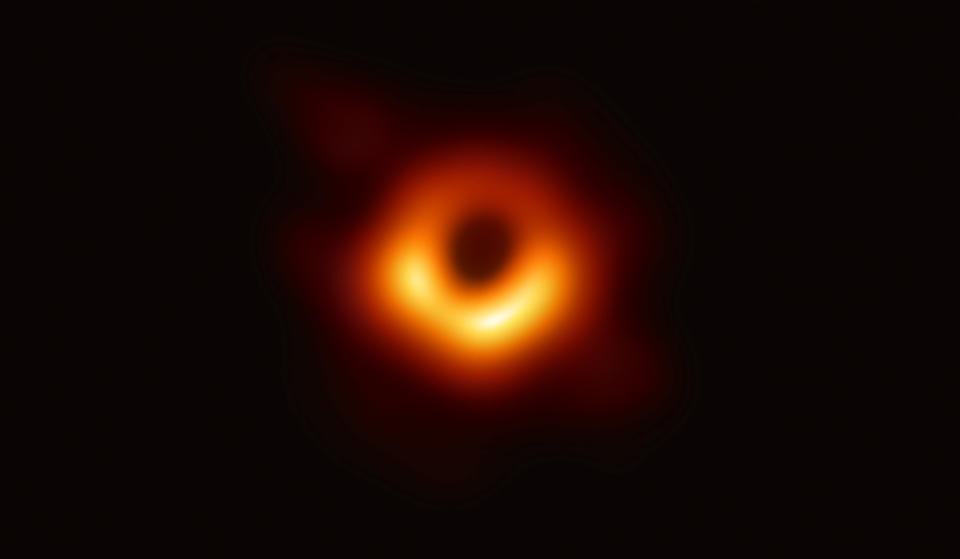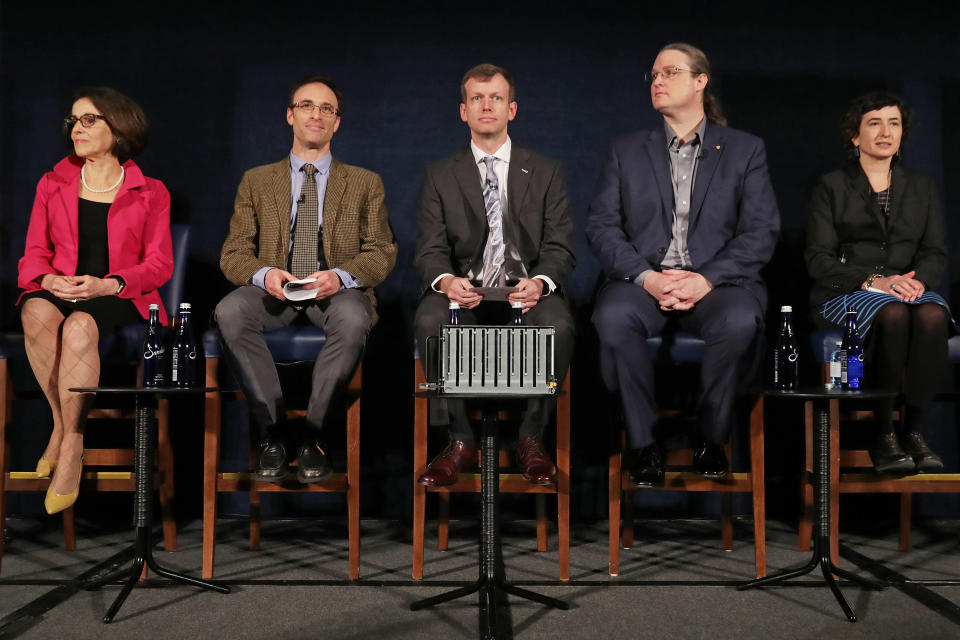Earthlings get first glimpse of a black hole
The history books will mark Wednesday, April 10, as the day humanity got its first look at a black hole.
That’s when astronomers around the world unveiled the results of the “herculean task” of providing the first direct visual evidence of a supermassive black hole captured by a global network of eight telescopes on five continents, collectively called the Event Horizon Telescope (EHT). The “event horizon” marks the distance from a black hole at which light is trapped by its enormous gravity, the point of no return.

“We have seen what we thought was unseeable,” said EHT director Sheperd Doeleman at a press briefing hosted by the National Science Foundation and EHT in Washington, D.C. “We have seen and taken a picture of a black hole.”
“We’ve been studying black holes so long, sometimes it’s easy to forget that none of us have actually seen one,” said France Cordova, director of the National Science Foundation, at the D.C. conference, one of seven concurrent briefings in cities including Brussels, Shanghai and Tokyo.

The black hole, which scientists said is 6.5 billion times more massive than the sun and spins clockwise, was discovered more than 50 million light years from Earth at the center of a galaxy called Messier 87 (M87).
“What we see is larger than the size of our entire solar system,” Heino Falcke, a Netherlands professor told BBC News. “And it is one of the heaviest black holes that we think exists. It is an absolute monster, the heavyweight champion of black holes in the universe.”
“You have probably seen many, many images of black holes before,” said Falcke at the press briefing. “But they were all simulations or animations. And this is precious to all of us, because this one is finally real.”
The decadeslong endeavor to capture the massive black hole culminated in one week in April 2017, during which all eight telescopes observed the same areas of space and collected vast amounts of data that then took months to analyze. Over 200 researchers took part in the project, computing data over the course of two years.
But before this revelation, three years ago Katie Bouman, an MIT graduate student in electrical engineering and computer science, led the development of a new algorithm to help astronomers produce the first image of a black hole.
This is M87* and this the first image of a black hole! Mass is 6.5 Billion suns within size of a solar system. Precious because real. Waited 25 years for this. Dark shadow is where light disappears in #eventhorizon. We see something never seen before. #blackhole #JustWow #EHT pic.twitter.com/3nCosTzyER
— Heino Falcke (@hfalcke) April 10, 2019
Black holes are invisible, dense remnants of a large star that died in a supernova explosion, according to NASA. Their intense gravity field pulls in everything around it, including light.
“But some black holes, especially supermassive ones dwelling in galaxies’ centers, stand out by voraciously accreting bright disks of gas and other material,” reported Science News. “The EHT image reveals the shadow of M87’s black hole on its accretion disk. Appearing as a fuzzy, asymmetrical ring, it unveils for the first time a dark abyss of one of the universe’s most mysterious objects.”
The picture of the black hole captured by the Earth-spanning telescope network shows a halo of “emission from hot gas swirling around [the black hole] under the influence of strong gravity near its event horizon.” It is further confirmation of Albert Einstein’s general Theory of Relativity, which predicted the existence of black holes.
“This has been our first chance to see the inner workings of black holes and to test a fundamental prediction of Einstein's Theory of General Relativity,” Feryal Ozel, an astrophysicist who was the modeling and analysis lead on the project, told ABC News. “Not only the existence of a shadow that indicates a point of no return — or an event horizon — but also the size and shape of that shadow.”
“It’s a dream come true, on many levels,” she added.
_____
Read more from Yahoo News:



